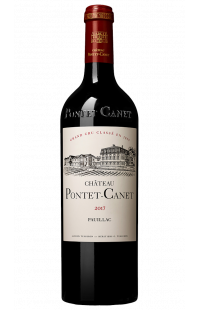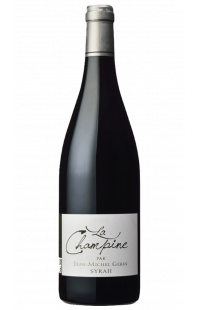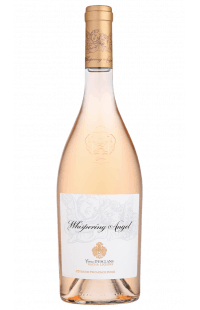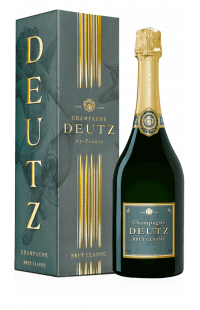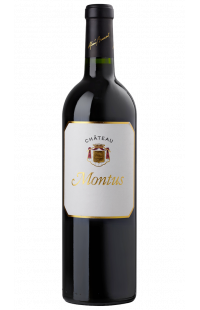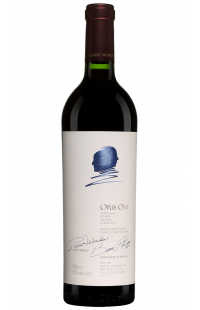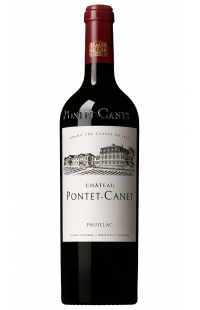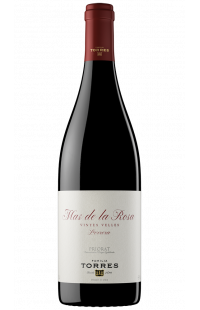- Menu
- All our wines
- Bordeaux
-
Rhône
-
Burgundy
-
Rosés Wines
-
Champagne
- France
-
World
- PRIMEURS
- ORGANIC WINES
Priorat wines
The Prestigious Wines of Priorat: An Exploration of Exceptional Terroirs
Located in the northeast of Spain, the wine region of Priorat is one of Catalonia's rare gems. With its 1,800 hectares of vines, it may seem modest in size, but its impact on the wine world is immense. Priorat is not only the smallest Denominación de Origen (DO) in Catalonia but is also part of the very exclusive circle of Spanish wine regions that have obtained the prestigious Denominación de Origen Calificada (DOCa) title, a label guaranteeing the production of exceptionally high-quality wines. So, what makes Priorat wines so special and sought after by enthusiasts worldwide? This article invites you on a journey to the heart of this region to discover the secrets behind its prestigious wines.
Priorat's Unique Terroir: The Key to Its Success
An Exceptional Soil: The Black Slate Llicorella
The soil of Priorat is one of the most distinctive and important elements of the region. Known as llicorella, this soil is composed mainly of black slate and quartz, which gives Priorat wines their unique mineral character. This geological composition allows the vines to penetrate deep into the soil in search of water and nutrients, contributing to the production of grapes concentrated in flavors. Moreover, the black slate reflects heat, creating a warm microclimate that favors optimal ripening of the grapes.
Orography and Altitudes: Vines Perched on Terraces
The vineyards of Priorat are often planted on steep slopes, sometimes reaching altitudes of 700 meters above sea level. This rugged topography, combined with the use of terraces, allows winemakers to maximize sun exposure while preventing erosion. The terraces, often very old, testify to the arduous work of vintners to tame this difficult landscape.
Harsh Climate: A Challenge for Winemakers
Despite its proximity to the Mediterranean Sea, Priorat is one of the hottest and driest regions in Spain. Summers are long and scorching, with little rainfall, imposing challenging cultivation conditions. However, these extreme conditions force the vines to dig deep into the soil, producing grapes with an intense concentration of flavors and tannins. This demanding climate, combined with the unique llicorella soils, is essential to understanding the character of Priorat wines.
The Emblematic Grape Varieties of Priorat
Garnacha and Cariñena: The Pillars of Local Viticulture
The traditional grape varieties of Priorat, Garnacha (Grenache) and Cariñena (Carignan), are at the heart of the region's viticultural identity. Garnacha brings aromas of red fruits and a voluptuous sweetness, while Cariñena adds robust tannic structure and spicy notes. Together, they create powerful, balanced wines capable of aging for many years.
The Contribution of International Varieties: Syrah, Cabernet Sauvignon, and Merlot
In addition to indigenous grape varieties, some Priorat winemakers have also integrated international varieties such as Syrah, Cabernet Sauvignon, and Merlot into their blends. These varieties add additional complexity, with aromas of black fruits, spices, and increased depth, while remaining faithful to Priorat's unique style.
History and Renaissance of Priorat
Ancient Roots: The Heritage of Carthusian Monks
Priorat's winemaking history dates back to the 12th century when Carthusian monks introduced viticulture to the region. They not only planted the first vineyards but also developed viticultural techniques adapted to Priorat's rugged terrain. The name "Priorat" is derived from "prior," referring to the priory founded by these monks.
Decline and Renewal: The Modern Era of Priorat
After a long decline over the centuries, partly due to phylloxera and rural exodus, Priorat experienced a renaissance in the 1980s thanks to a group of visionary winemakers. These pioneers rediscovered the potential of the region's unique terroir and revitalized the old vines. They also introduced modern viticultural practices while respecting local traditions, allowing Priorat to regain its prestige on the global stage.
The Great Names of Priorat: Iconic Estates and Producers
Alvaro Palacios: The Artisan of Renewal
Alvaro Palacios is one of the most respected names in Priorat. Having learned the art of winemaking in the greatest Bordeaux châteaux, he returned to his native land to create some of the most sought-after wines in the world. His estate, Clos Dofí, is a perfect example of the expression of Priorat's terroir, with rich, deep, and highly elegant wines.
Clos Mogador: An Iconic Wine
Clos Mogador, created by René Barbier, is another emblematic estate of Priorat. This family estate was one of the pioneers of Priorat's renaissance, and its wines are now considered regional benchmarks. The Clos Mogador wine is renowned for its complexity, perfect balance between power and finesse, and its ability to age for decades.
The Small Producers: The Soul of Priorat
In addition to the major estates, Priorat is also home to many small producers who often work artisanally. These winemakers, attached to their terroir, produce wines in small quantities, often from old vines, that reflect the essence of Priorat in an authentic and unfiltered way.
The Winemaking Process: From Grape to Glass
Manual Harvesting: Meticulous Work
Due to Priorat's rugged topography, harvesting is almost always done by hand. This allows for rigorous selection of grapes, choosing only the ripest and healthiest berries. Manual harvesting, though laborious, is essential to ensure the quality of Priorat wines.
Vinification: Between Tradition and Modernity
Winemaking in Priorat combines traditional techniques with modern methods. After harvesting, the grapes are often destemmed and fermented in stainless steel tanks to preserve the freshness and purity of aromas. However, many winemakers also use oak barrels for fermentation and aging, adding nuances of vanilla, cedar, and sweet spices to the wines.
Aging in Barrels: Complex Refinement
Aging in barrels, often French oak, is a crucial step in the production of Priorat wines. This aging period can last from 12 to 24 months, or even longer, allowing the wines to develop their aromatic complexity and tannic structure. The barrels also impart subtle aromas that complement the intrinsic characteristics of the grapes.
Organoleptic Characteristics of Priorat Wines
Color and Appearance: Visual Intensity
Priorat wines are distinguished by their deep and intense color, often a dark ruby red with garnet reflections. This dense robe is a prelude to the richness of aromas and flavors found on the palate.
Nose: A Powerful and Complex Bouquet
The bouquet of Priorat wines is both powerful and complex, with aromas of ripe black fruits such as blackberry, black cherry, and cassis, accompanied by mineral notes typical of the slate soil. There are also hints of spices, chocolate, and sometimes a floral touch, all supported by characteristic freshness.
Palate: Tannic Structure and Exceptional Depth
On the palate, Priorat wines are characterized by a solid tannic structure, well-balanced acidity, and exceptional depth. The tannins, often robust but well-integrated, allow the wines to age gracefully for many years, developing complex tertiary aromas of leather, tobacco, and underbrush.
Food and Wine Pairings: Enhancing Priorat Wines
Red Meats and Game: Perfect Alliances
Priorat wines, with their power and structure, pair wonderfully with red meat dishes, such as grilled steak or roast beef. Game meats like venison or wild boar are also ideal partners, their intense flavors being perfectly balanced by the deep aromas of the wines.
Mediterranean Cuisine: Regional Harmony
Mediterranean cuisine, rich in aromatic herbs, grilled vegetables, and olive oil, naturally pairs with Priorat wines. Dishes based on lamb, stews, and even paellas can be enhanced by the complexity and depth of the wines.
Aged Cheeses: A Gustatory Complement
Aged cheeses, especially those with strong and pronounced flavors, find a perfect echo in Priorat wines. An aged sheep's cheese or a blue cheese can magnify the tannins and aromas of the wines, creating an unforgettable tasting experience.
Priorat: A Wine Heritage to Discover
Vineyard Tours: An Immersion in History and Tradition
Visiting the vineyards of Priorat is an unforgettable experience. Many estates offer guided tours, allowing visitors to discover production methods, the history of the vineyards, and, of course, to taste the wines on-site. Walking through the steep terraces and feeling the heat of the slate soil under your feet gives a new perspective on the wines you taste.
Local Tastings and Events: A Glimpse into Viticultural Culture
Priorat is also renowned for its numerous wine events throughout the year, where wine lovers can taste the region's best vintages, often accompanied by local culinary specialties. These events are the perfect opportunity to discover new producers, learn more about the terroir, and share convivial moments with other enthusiasts.
Challenges and Future of Priorat
Climate Change: A Challenge for Winemakers
Like many other wine regions, Priorat faces the challenges of climate change. Rising temperatures and prolonged drought periods threaten wine production. However, Priorat winemakers, faithful to their heritage of resilience, are adapting their practices by exploring sustainable viticulture methods, replanting grape varieties more resistant to heat, and innovating in water management.
Innovation within Tradition: Towards Sustainable Viticulture
Despite the challenges, Priorat continues to innovate while remaining faithful to its traditions. Increasingly, estates are adopting organic and biodynamic viticultural practices, minimizing environmental impact while preserving wine quality. This sustainable approach is not only beneficial for the environment but also ensures that future generations can continue to enjoy Priorat's exceptional wines.
Priorat Wines on the International Scene
Growing Prestige: Global Recognition
The prestige of Priorat wines continues to grow on the international scene. More and more critics and sommeliers recognize the exceptional quality of the region's wines, placing them alongside the world's greatest wines. This international recognition is the result of the hard work of Priorat's winemakers, who have made the most of their unique terroir.
Export and Distribution: Conquering New Markets
Although Priorat is a small region in terms of production, its wines are now available in many markets worldwide. Export represents a significant part of the region's economic success, allowing Priorat wines to reach a global audience. Estates, whether small or large, are constantly seeking to conquer new markets while maintaining the exclusivity and quality of their products.
Priorat Wines: An Experience Not to Be Missed
Why Invest in Priorat Wines?
Investing in Priorat wines is a wise decision for any serious wine enthusiast. Not only do these wines offer an unparalleled tasting experience, but their ability to age means they can be kept for many years, gaining in complexity and value over time. Whether for a special occasion or to enrich a wine cellar, Priorat wines are a safe and refined choice.
How to Fully Appreciate Priorat Wines?
To fully appreciate Priorat wines, it's essential to taste them in an appropriate setting. Serving these wines at a temperature slightly below room temperature allows their aromas and tannic structure to shine. Tasting them slowly, taking the time to explore each layer of flavor, is key to understanding and appreciating the depth and complexity that characterize these wines.
FAQs about Priorat Wines
What makes Priorat wines so special? Priorat wines are special due to their unique terroir, composed of black slate soils (llicorella), and their harsh climate. These conditions, combined with the indigenous grape varieties Garnacha and Cariñena, produce powerful, complex wines capable of aging.
What are the main grape varieties used in Priorat wines? The main grape varieties used in Priorat wines are Garnacha (Grenache) and Cariñena (Carignan). Some producers also use international varieties like Syrah, Cabernet Sauvignon, and Merlot to add complexity to the wines.
How do Priorat wines pair with food? Priorat wines pair well with red meats, game dishes, and Mediterranean cuisine. They also complement aged cheeses perfectly, with their tannic structure and intense aromas enhancing robust flavors.
What is the history of viticulture in Priorat? Viticulture in Priorat dates back to the 12th century with the arrival of Carthusian monks. After a period of decline, the region experienced a renaissance in the 1980s thanks to pioneering winemakers who rediscovered the potential of the terroir.
Is climate change affecting Priorat wines? Yes, climate change poses a challenge to Priorat winemakers, with higher temperatures and longer drought periods. However, many producers are adapting their practices to face these challenges, notably by adopting sustainable viticulture methods.
Where can I buy Priorat wines? Priorat wines are available at specialized wine shops, some upscale supermarkets, and online. Thanks to their growing recognition, they are exported to many international markets.
Conclusion
Priorat wines are more than just viticultural products; they are the living expression of a unique terroir and a deep cultural heritage. These are wines that captivate enthusiasts with their complexity, power, and ability to tell the story of the land from which they come. Whether you are an experienced wine lover or a curious novice, Priorat wines offer an unforgettable sensory experience, an invitation to discover a corner of Catalonia where the winemaking tradition is as rich as the wines themselves.
